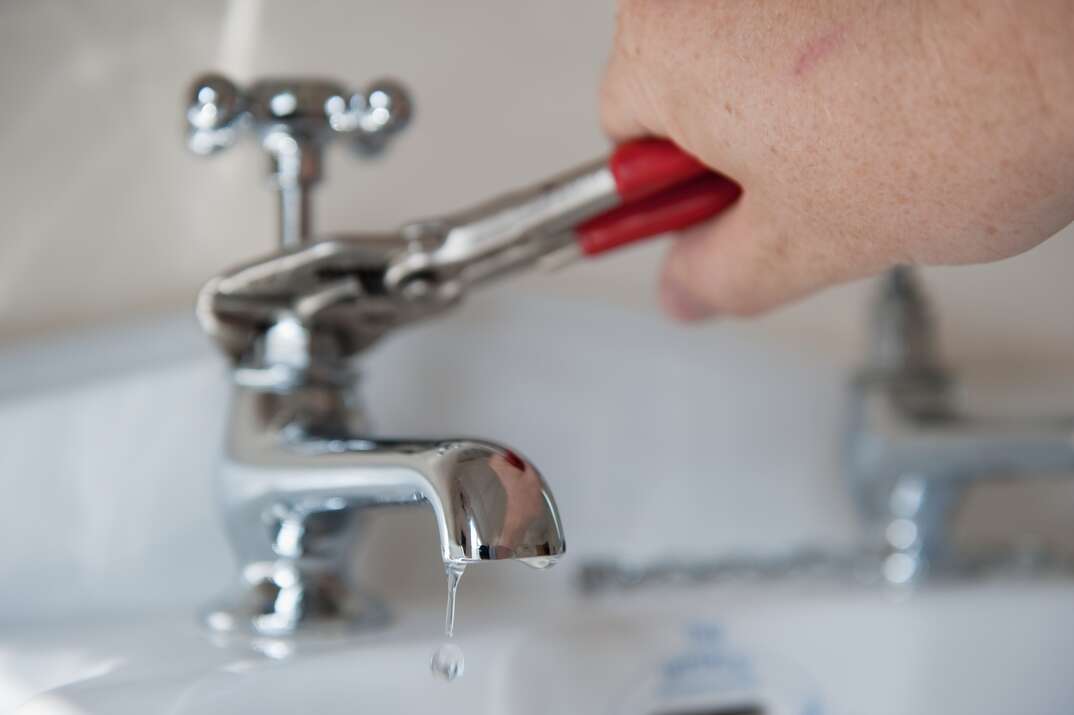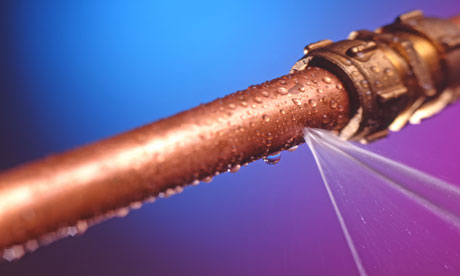We have found this post involving How To Fix Noisy Pipes down the page on the net and thought it made good sense to discuss it with you over here.

To diagnose noisy plumbing, it is necessary to establish first whether the unwanted audios take place on the system's inlet side-in various other words, when water is turned on-or on the drainpipe side. Sounds on the inlet side have actually differed causes: too much water pressure, used shutoff and tap parts, improperly connected pumps or other devices, incorrectly positioned pipeline fasteners, and also plumbing runs containing way too many tight bends or various other constraints. Sounds on the drainpipe side usually originate from inadequate area or, as with some inlet side noise, a layout having limited bends.
Hissing
Hissing sound that occurs when a faucet is opened a little normally signals excessive water stress. Consult your neighborhood public utility if you suspect this trouble; it will certainly have the ability to inform you the water pressure in your location as well as can mount a pressurereducing shutoff on the incoming water pipe if needed.
Various Other Inlet Side Noises
Squeaking, squealing, scratching, breaking, and touching typically are brought on by the expansion or contraction of pipelines, usually copper ones supplying warm water. The noises take place as the pipelines slide versus loosened bolts or strike nearby residence framework. You can commonly pinpoint the place of the trouble if the pipes are subjected; simply adhere to the audio when the pipes are making noise. Probably you will discover a loosened pipe wall mount or an area where pipelines exist so near to flooring joists or various other mounting pieces that they clatter versus them. Affixing foam pipeline insulation around the pipelines at the point of call should correct the trouble. Be sure straps and hangers are protected and also provide ample support. Where feasible, pipe bolts should be affixed to huge architectural elements such as structure walls rather than to mounting; doing so decreases the transmission of vibrations from plumbing to surfaces that can enhance as well as move them. If affixing bolts to framework is inescapable, cover pipes with insulation or other resilient product where they contact bolts, and also sandwich completions of brand-new fasteners between rubber washers when mounting them.
Dealing with plumbing runs that deal with flow-restricting limited or various bends is a last option that should be carried out just after consulting a proficient plumbing contractor. Unfortunately, this situation is fairly common in older homes that may not have actually been developed with interior plumbing or that have seen numerous remodels, specifically by beginners.
Babbling or Shrilling
Extreme chattering or shrilling that takes place when a shutoff or tap is switched on, which normally vanishes when the fitting is opened totally, signals loose or defective internal parts. The option is to change the shutoff or tap with a brand-new one.
Pumps and also devices such as cleaning equipments and also dishwashers can move electric motor sound to pipelines if they are incorrectly linked. Link such items to plumbing with plastic or rubber hoses-never rigid pipe-to isolate them.
Drain Sound
On the drain side of plumbing, the principal objectives are to get rid of surfaces that can be struck by dropping or rushing water and to shield pipes to contain inescapable noises.
In new construction, tubs, shower stalls, toilets, and also wallmounted sinks and containers ought to be set on or versus resilient underlayments to lower the transmission of sound with them. Water-saving commodes as well as taps are less noisy than standard designs; mount them instead of older kinds even if codes in your location still permit utilizing older components.
Drains that do not run vertically to the cellar or that branch into horizontal pipeline runs sustained at floor joists or various other framing existing especially troublesome noise problems. Such pipes are large enough to radiate considerable vibration; they also carry significant quantities of water, that makes the scenario even worse. In new building, specify cast-iron soil pipelines (the huge pipes that drain commodes) if you can afford them. Their enormity contains a lot of the sound made by water going through them. Also, stay clear of directing drainpipes in wall surfaces shared with rooms as well as rooms where individuals gather. Walls containing drains ought to be soundproofed as was defined earlier, making use of double panels of sound-insulating fiberboard and also wallboard. Pipes themselves can be wrapped with unique fiberglass insulation made for the function; such pipelines have an invulnerable plastic skin (sometimes consisting of lead). Results are not constantly acceptable.
Thudding
Thudding noise, frequently accompanied by trembling pipelines, when a tap or home appliance valve is switched off is a problem called water hammer. The noise and vibration are caused by the resounding wave of pressure in the water, which unexpectedly has no area to go. In some cases opening a valve that releases water promptly right into an area of piping consisting of a limitation, arm joint, or tee fitting can produce the very same problem.
Water hammer can typically be cured by mounting fittings called air chambers or shock absorbers in the plumbing to which the problem shutoffs or faucets are attached. These gadgets allow the shock wave developed by the halted flow of water to dissipate airborne they include, which (unlike water) is compressible.
Older plumbing systems might have short upright sections of capped pipeline behind wall surfaces on faucet competes the same function; these can at some point fill with water, minimizing or destroying their efficiency. The treatment is to drain the water system entirely by shutting off the primary water shutoff and also opening up all taps. After that open up the primary supply valve and close the faucets individually, starting with the faucet nearest the shutoff as well as finishing with the one farthest away.
3 Most Common Reasons for Noisy Water Pipes
Water hammer
When water is running and is then suddenly turned off, the rushing liquid has no place to go and slams against the shut-off valve. The loud, thudding sound that follows is known as a water hammer. Besides being alarming, water hammer can potentially damage joints and connections in the water pipe itself. There are two primary methods of addressing this issue.
- Check your air chamber. An air chamber is essentially a vertical pipe located near your faucet, often in the wall cavity that holds the plumbing connected to your sink or tub. The chamber is filled with air that compresses and absorbs the shock of the fast moving water when it suddenly stops. Unfortunately, over time air chambers tend to fill with water and lose their effectiveness. To replenish the air chambers in your house you can do the following.
- Turn off the water supply to your house at the main supply (or street level).
- Open your faucets to drain all of the water from your plumbing system.
- Turn the water back on. The incoming water will flush the air out of the pipes but not out of the vertical air chamber, where the air supply has been restored.
Copper pipes
Copper pipes tend to expand as hot water passes through and transfers some of its heat to them. (Copper is both malleable and ductile.) In tight quarters, copper hot-water lines can expand and then noisily rub against your home's hidden structural features — studs, joists, support brackets, etc. — as it contracts.
One possible solution to this problem is to slightly lower the temperature setting on your hot water heater. In all but the most extreme cases, expanding and contracting copper pipes will not spring a leak. Unless you’re remodeling, there's no reason to remove sheetrock and insert foam padding around your copper pipes.
Water pressure that’s too high
If your water pressure is too high, it can also cause noisy water pipes. Worse, high water pressure can damage water-supplied appliances, such as your washing machine and dishwasher.
Most modern homes are equipped with a pressure regulator that's mounted where the water supply enters the house. If your home lacks a regulator, consider having one professionally installed. Finally, remember that most plumbers recommend that water is delivered throughout your home at no lower than 40 and no greater than 80 psi (pounds per square inch).
Whatever the state of your plumbing, one thing is certain — you’re eventually going to encounter repair and replacement issues around your home that require professional help. That’s where American Home Shield can come to your aid.
https://www.ahs.com/home-matters/repair-maintenance/causes-of-noisy-water-pipes/

I discovered that article about Diagnose Unwanted Plumbing Noises when doing a search on the web. Loved our blog posting? Please share it. Let somebody else check it out. Thank you so much for your time spent reading it.
Prioritize plumbing safety.
Comments on “Exploring and Fixing Residential Plumbing Noises”